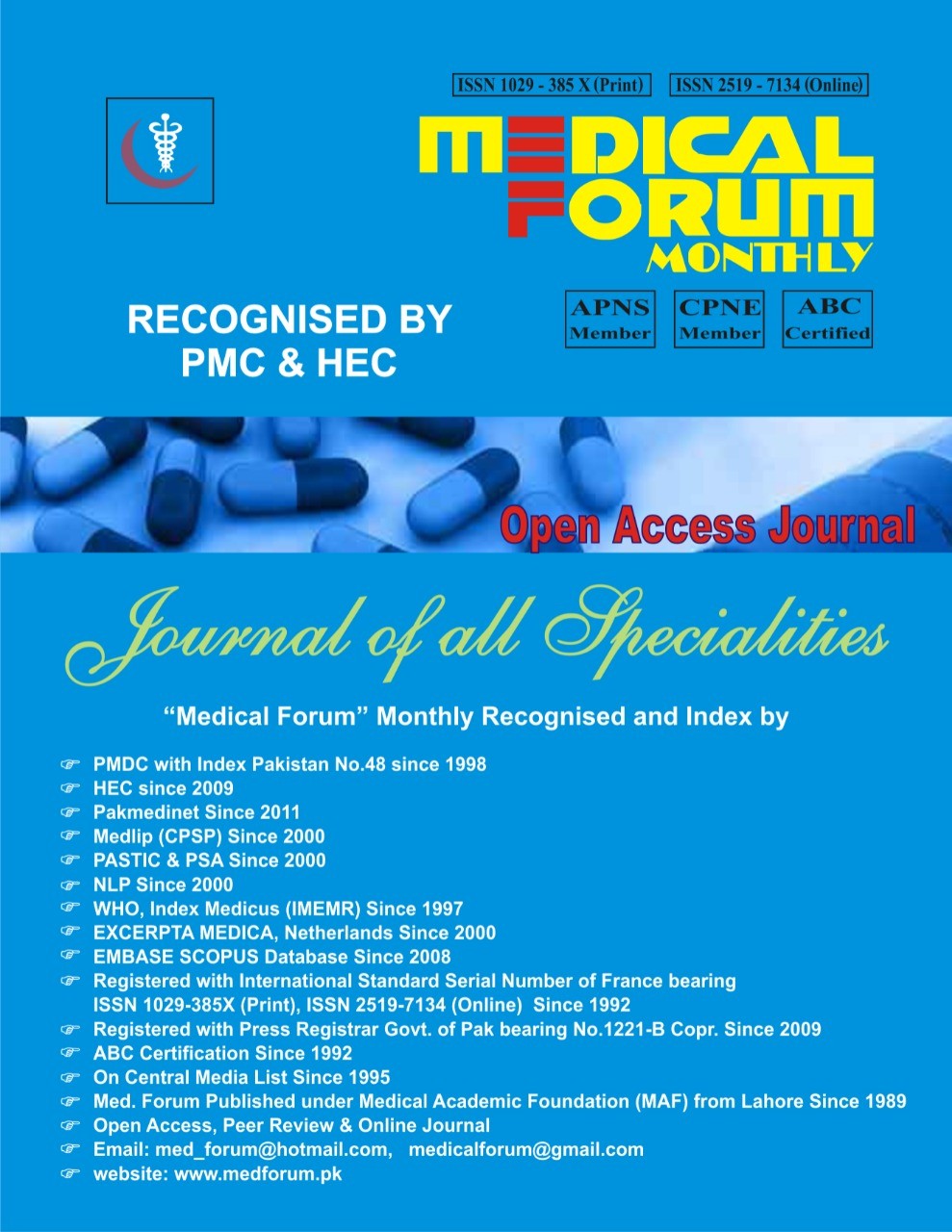
17.Non-Alcoholic Fatty Disease of Liver in Obese Persons, an Underappreciated Risk
Mohammad Mohsin Rana1, Burhan Rasheed2, Muhammad Bilal Kundi1, Muazzam Fuaad1, Tahir Baig2 and Mohammad Saleem Akhtar1
ABSTRACT
Objective: To assess the incidence of NAFDL among local obese population, relate it with USG grading of fatty change in liver and to highlight the issue and sensitize both general population and the medical community to recognize its importance for early diagnosis and interventions.
Study Design: Observational cross section study
Place and Duration of Study: This study was conducted at the Rai Medical College teaching Hospital, Sargodha from Jan. 2021 to Dec, 2021 for a period of one-year.
Materials and Methods: The patients attending the medical OPD between the ages of 20-70 years, both genders were selected for this Observational study, convenient sampling. Ideal body weight, BMI and B-Mode USG were recorded to measure hepatic size and parenchymal echogenicity as per standard.
Results: 1010 Patients, 700 females, 310 males participated. All the % calculations are for the total number of patients. When assessed by USG, in the Normal weight category only 3% had normal parenchymal echotexture of liver (nPEL), 19% had Grade 1 Fatty liver (FL), 3% had Grade 2 FL and none had Grade 3 FL. In overweight category none had nPEL, 26% had Grade 1 FL, 32% had Grade 2 FL and none had Grade 3 FL. In obese category none had nPEL, 7% had Grade 1 FL, 10% had Grade 2 FL and none had Grade 3 FL. When assessed by USG, in the <25 BMI category 1% had nPEL, 12% had Grade 1 FL, 4% had Grade 2 FL and none had Grade 3 FL. In 25.0-29.9 BMI category none had nPEL, 25% had Grade 1 FL, 19% had Grade 2 FL and none had Grade 3 FL. In 30-35 BMI category none had nPEL, 16% had Grade 1 FL, 8% had Grade 2 FL and none had Grade 3 FL. In >35 BMI category none had nPEL, 8% had Grade 1 FL, 8% had Grade 2 FL and none had Grade 3 FL.
Conclusion: Early detection of HPE changes and sensitization to its future implication as a risk factor for CLD and even HCC among both medical community and general public must be the priority in our professional circles. It shall be highlighted in all clinical conferences because early interventions in terms of lifestyle modifications targeted to not only weight reduction but more importantly weight maintenance have a great potential for reversal of all these changes.
Key Words: Obesity, BMI, NAFDL, IR, Metabolic Syndrome
Citation of article: Rana MM, Rasheed B, Kundi MB, Fuaad M, Baig T, Akhtar MS. Non-Alcoholic Fatty Disease of Liver in Obese Persons, an Underappreciated Risk. Med Forum 2022;33(3):68-72.
